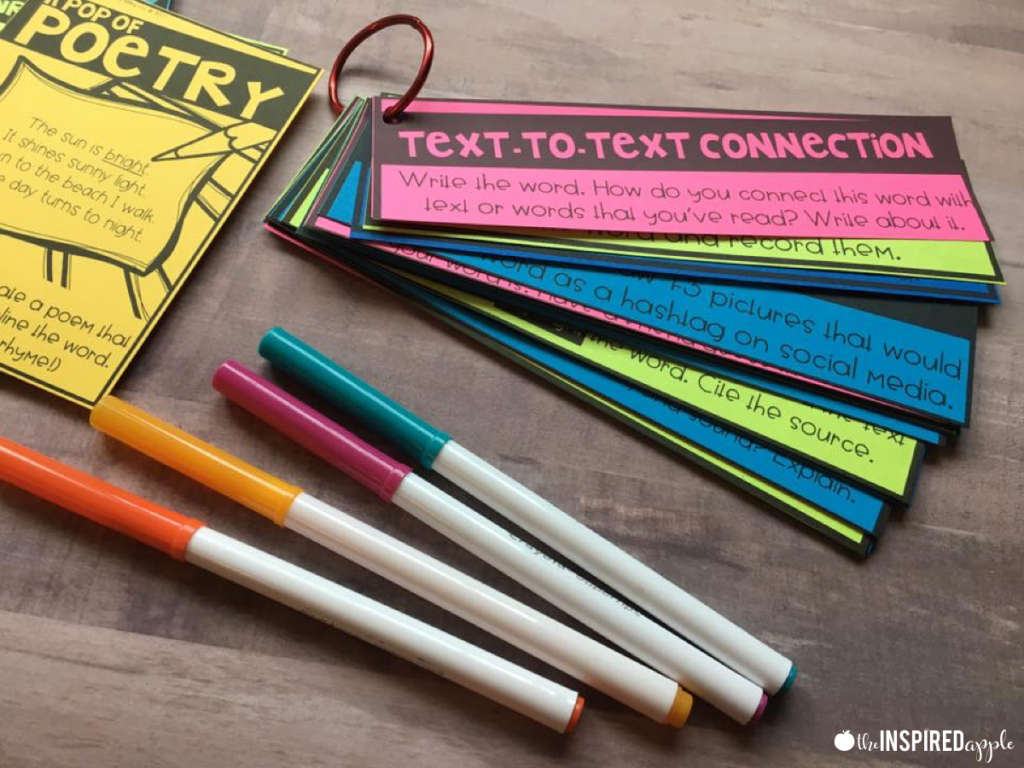
Vocabulary development is an essential component of literacy and overall academic success. Engaging learners with innovative and effective vocabulary activities contends not only with rote memorization but also nurtures a deeper understanding of word meanings. This exploration will identify various engaging activities that provide direct practice in working with word meanings, promoting vocabulary growth while ensuring that learning remains enjoyable and interactive.
1. Word Mapping: An Integrated Approach
Word mapping is a multifaceted strategy that enables learners to dissect vocabulary words into their fundamental components. This approach may include identifying synonyms, antonyms, and derivational forms. A visual representation can be created on a graphic organizer, illustrating the relationships between words and their meanings. This activity fosters critical thinking, allowing students to construct semantic webs that link new vocabulary to their existing knowledge base. As learners delve deeper into the nuances of each word, they cultivate not merely recognition but a profound grasp of usage.
2. Semantic Mapping: Connecting Ideas and Vocabulary
The semantic mapping technique expands upon word mapping by encouraging the exploration of a word’s broader context. Participants brainstorm associations—other words, images, and concepts—that connect to the target vocabulary term. This method engages both creative and analytical skills, allowing learners to visualize the broader implications of vocabulary. For example, for the word “ocean,” students might include descriptors like “deep,” “blue,” and “vast,” alongside images that represent marine life. Such associations enhance memory retention and deepen comprehension, as they establish a cognitive framework that links new information to familiar concepts.
3. Vocabulary Games: Infusing Fun into Learning
Games can serve as a powerful vehicle for vocabulary acquisition. Activities such as word bingo, vocabulary Jeopardy, or matching games promote engagement and competition among peers. Incorporating elements of chance or strategy stimulates excitement while reinforcing word meanings. For instance, in a game of vocabulary bingo, students fill in their cards with vocabulary words and listen for definitions called out by the instructor. This interactive milieu not only consolidates word understanding but also fosters social interaction and collaborative learning.
4. Contextualized Storytelling: Building Meaning through Narrative
Crafting and sharing stories that incorporate targeted vocabulary can significantly bolster comprehension. When learners are tasked with creating narratives, they must employ specific words within meaningful contexts. Through storytelling, the words take on life and significance, embedded in an engaging plot or scenario. This method allows for emotional connections to the vocabulary; it transforms dry, abstract terms into vivid experiences. Encouraging students to share their tales—whether orally or in written form—also builds confidence in their usage of new vocabulary.
5. Interactive Technology Tools: Digital Innovations for Vocabulary Growth
With the advent of digital learning tools, vocabulary growth has become increasingly accessible and engaging. Interactive applications and websites provide innovative platforms where students can explore vocabulary through quizzes, games, and interactive flashcards. Tools such as Quizlet enable personalized vocabulary practice, accommodating diverse learning styles while encouraging individual pacing. Moreover, gamified learning platforms maintain student interest through rewards and recognitions, harnessing technology to forge a dynamic learning environment.
6. Word of the Day: Cultivating Daily Vocabulary Engagement
The “Word of the Day” regimen is a productive routine that capitalizes on incremental learning. By introducing a new vocabulary word daily, learners can be provided with a structured yet straightforward opportunity to enrich their lexicon. Each day should encompass the word’s definition, pronunciation, and practical examples of usage. Encouraging students to create sentences or even short essays integrating the word fosters active application. This systematic approach also develops a habit of incorporating new vocabulary into everyday discourse.
7. Role-playing: Acting Out Vocabulary to Solidify Meaning
Engaging students through role-playing activities allows them to embody vocabulary words through actions and dialogues. This kinesthetic learning experience makes the meaning of words tangible; as students act out terms such as “collaborate” or “negotiate,” they gain a visceral understanding of their significance within social contexts. By stepping into different roles, learners can also develop empathy, enhancing their cognitive processing of the vocabulary contextually and relationally.
8. Collaborative Vocabulary Journals: Dialogue and Reflection
Establishing collaborative vocabulary journals encourages co-constructive learning. Students work in pairs or small groups to define vocabulary terms, generate synonyms, craft sentences, and provide personal reflections on usage. This collaborative approach not only enhances interpersonal skills but also allows learners to glean insight from diverse perspectives. Regularly revisiting and discussing entries fosters continuity in learning and reinforces retention through ongoing dialogue and reinforcement.
9. Visual Arts Integration: Infusing Creativity into Vocabulary Learning
The integration of visual arts can transform vocabulary activities into multifaceted learning experiences. Encouraging students to create artwork—such as illustrations or infographics—based on vocabulary words allows for a creative interpretation of meaning. This method caters to visual learners while fostering artistic expression and critical thinking. Furthermore, displaying their creations can enhance a sense of pride and accomplishment, thus incentivizing further vocabulary exploration.
In conclusion, comprehensively addressing vocabulary growth necessitates a plethora of dynamic, engaging activities that resonate with students. The diversity of approaches, infused with creativity and interactivity, not only aids in the acquisition of word meanings but also cultivates a profound appreciation for language. By adopting such methodologies, educators can create a rich tapestry of vocabulary experiences, ensuring learners thrive academically while enjoying the journey of language mastery.
